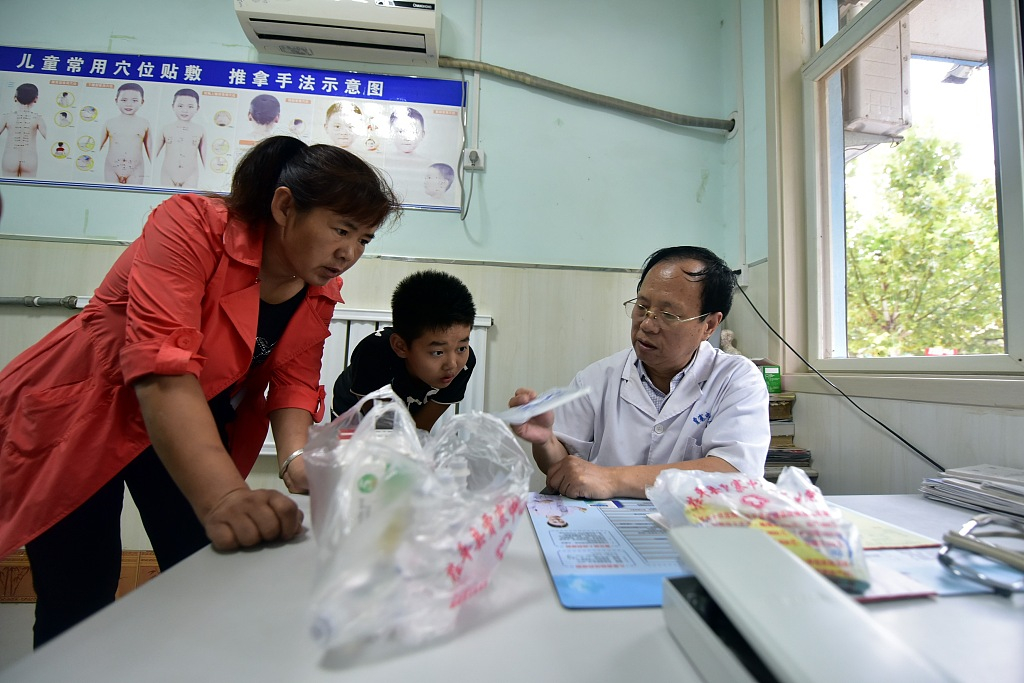
2020 is the last year of China's 13th Five-Year Plan (FYP). However, the sudden COVID-19 pandemic has disrupted the original pace of production and life. It's also a major test for the country's public health system.
"The practice of fighting COVID-19 exposed many loopholes in China's emergency management system," Zhong Ying, a researcher at the Institute of Contemporary China Studies of Chinese Academy of Social Sciences and a Chinese People's Political Consultative Conference National Committee member, told Chinese online journal rmzxb.com.cn. "It is necessary to integrate the emergency management system with the 14th FYP in a comprehensive and effective way."
Zhong identified two aspects she believes local governments at all levels need to take seriously.
"Firstly, the information collection, feedback and publish systems of local governments need to be improved," she said. "Secondly, the decision-making mechanism for major events need to be improved."
"At present, China's urban development has entered the era of metropolitan circle and urban agglomeration, so it is necessary to promote the balance of the distribution of resources and infrastructure within the metropolitan circle," Zhong said. "Especially the input of medical resources."
She said optimizing the distribution of medical resources and expanding public health services can help ease the pressure concentrated in the central city during a public health crisis and protect secondary central cities from being affected by the central city.
Public health in the 13th FYP
China expanded the public health section in the 13th FYP (2016 to 2020), creating an entire chapter that maps out plans to "Promote a Healthy China." Earlier FYPs mainly focused on building medical facilities and expanding medical staffing before shifting to rural health. The more recent FYPs focus on system building and reforms.

A doctor sees patients in rural area of China. /VCG
A doctor sees patients in rural area of China. /VCG
The "Promote a Healthy China" chapter consists of the following sections:
1. Healthcare Reform, which includes coordinating medical services, medical insurance, and pharmaceutical reforms, promoting the separation of medical care from pharmacy operations, and establishing a sound basic healthcare system covering all citizens.
2. The Medical Insurance System for All Citizens, which includes improving the mechanisms to ensure stable and sustainable funding for medical insurance, adjusting reimbursement rates for medical expenses and improving payment policies for medical insurance premiums.
3. Major Disease Prevention and Treatment and Basic Public Healthcare Services, which includes improving both basic and major national public healthcare service programs and providing better quality services more efficiently and equitably.
4. Maternal and Infant Healthcare and Childbirth Services, which includes implementing an assistance program for hospital births and providing pregnant and postnatal women with free, basic healthcare services throughout every stage of childbirth.
5. The Medical Service System, which includes optimizing the structure of the country's medical institution systems, promoting the integration of functions as well as innovation in services.
6. Traditional Chinese Medicine (TCM), which includes improving TCM healthcare service system by developing new TCM service models and raising the capacity for providing community-level services.
7. Getting Everybody Exercising, which includes implementing a fitness strategy to get the nation moving.
8. Food and Medicine Safety, which includes implementing the food and medicine safety strategy.
"With an emphasis on prevention, we will establish a sound basic healthcare system, see that all members of society have access to basic healthcare services and get everyone exercising to see that they become more healthy," the plan says.

After SARS
After the SARS outbreak in 2003, China issued a set of Regulations on Public Health Emergencies in May 2003 during the 10th FYP period. In its 11th FYP from 2006 to 2010, China included a proposal to establish a public health emergency response system for sudden public health events, improve the nation's disease prevention and control capacity and boost its medical treatment capability.
The 11th FYP also proposes improving the condition of medical and public health institutions and strengthening the pool of professionals in this field. It also calls for the development of community health services and the acceleration of the urban medical service system to foster greater cooperation between community health service institutions and hospitals formulate a two-way transfer for treatment.
Key references to public health development in the FYPs
The 11th FYP focuses on improving the public health and medical service system, strengthening disease prevention and control and preventive health care, and deepening medical and health care systems reform.
Meanwhile, the 12th and 13th FYPs propose strengthening the public healthcare system, improving urban and rural medical services and boosting the provision of medical supplies, advancing the reform of public hospitals, and improving the prevention and control capacity for major diseases as well as basic public health services.
Traditional Chinese medicine has been one of the keywords since the first FYP.